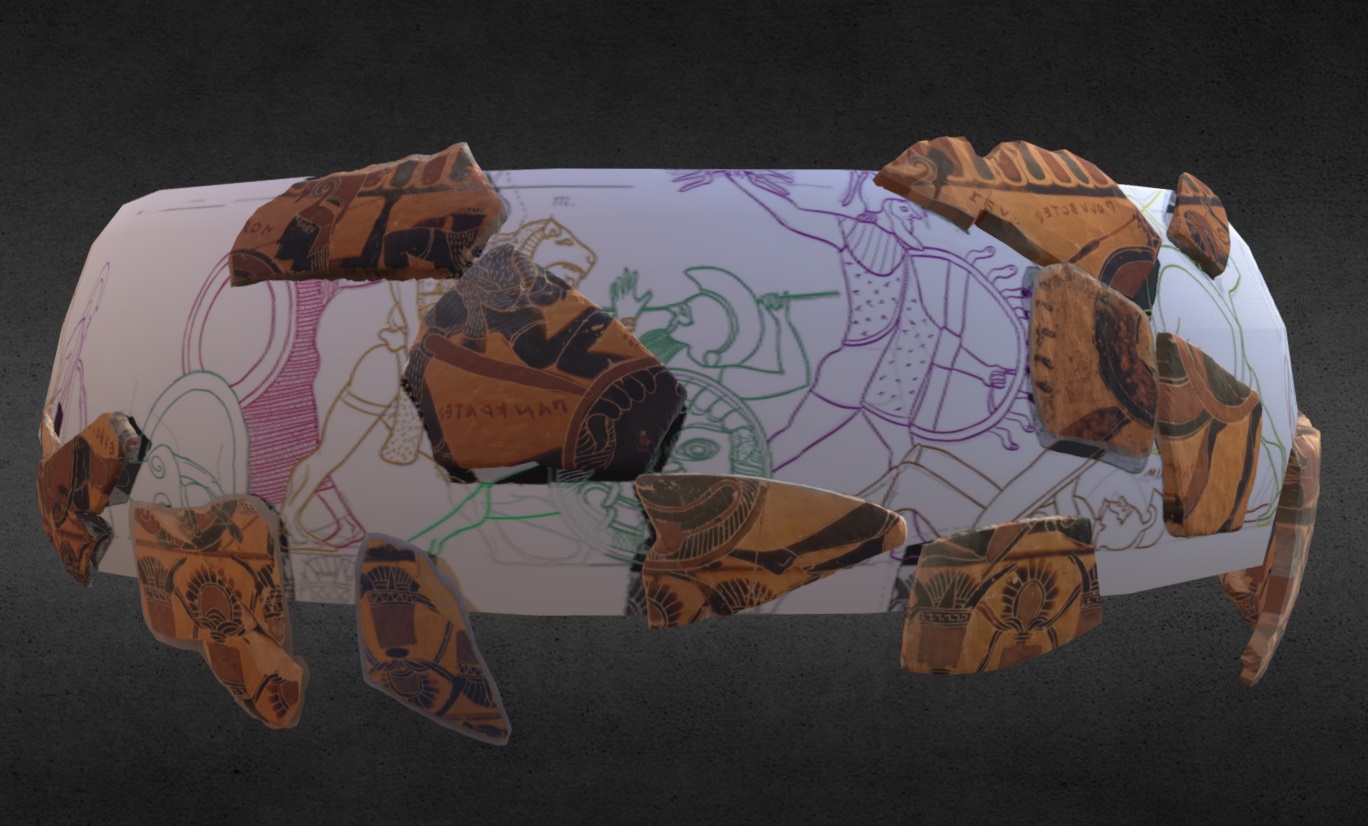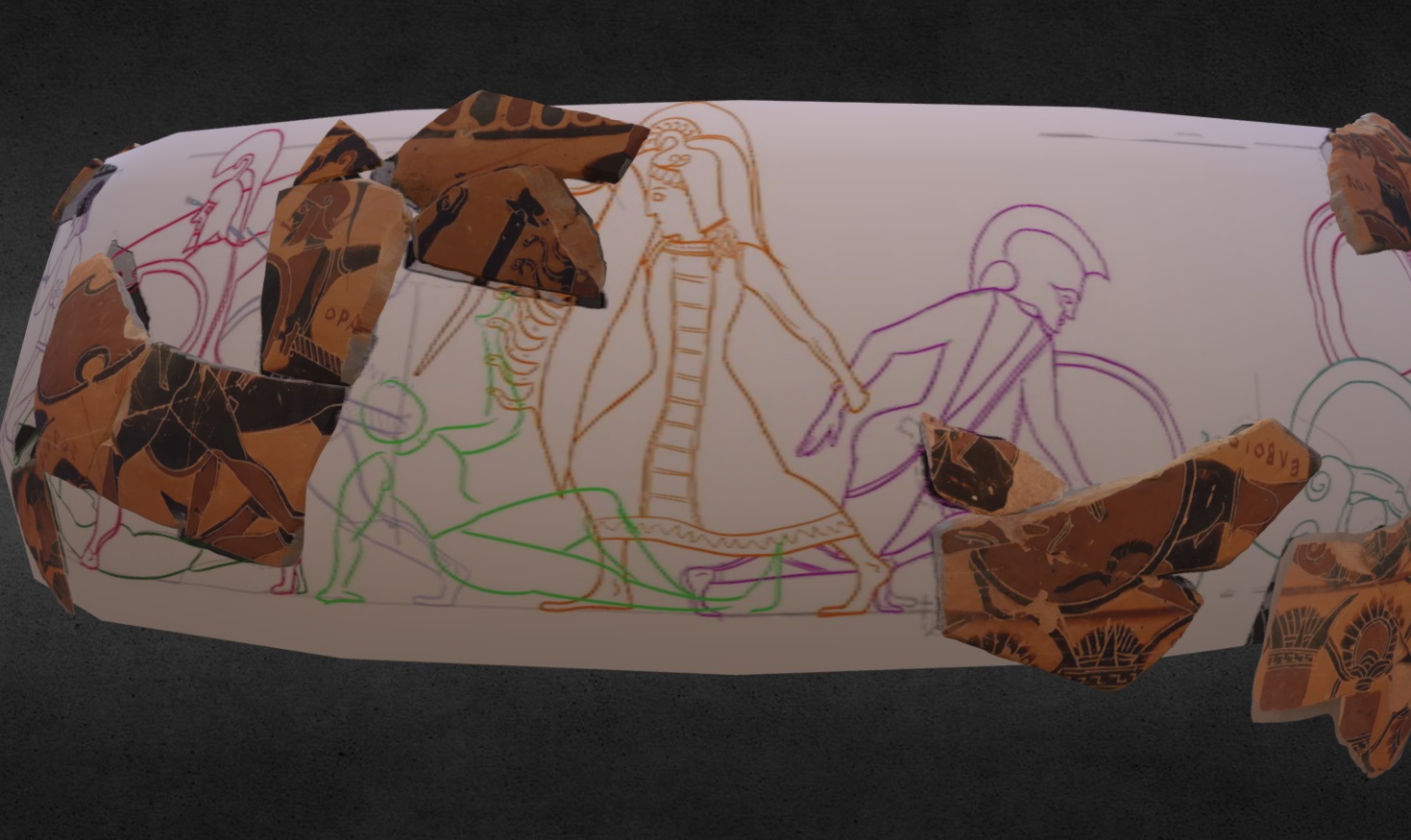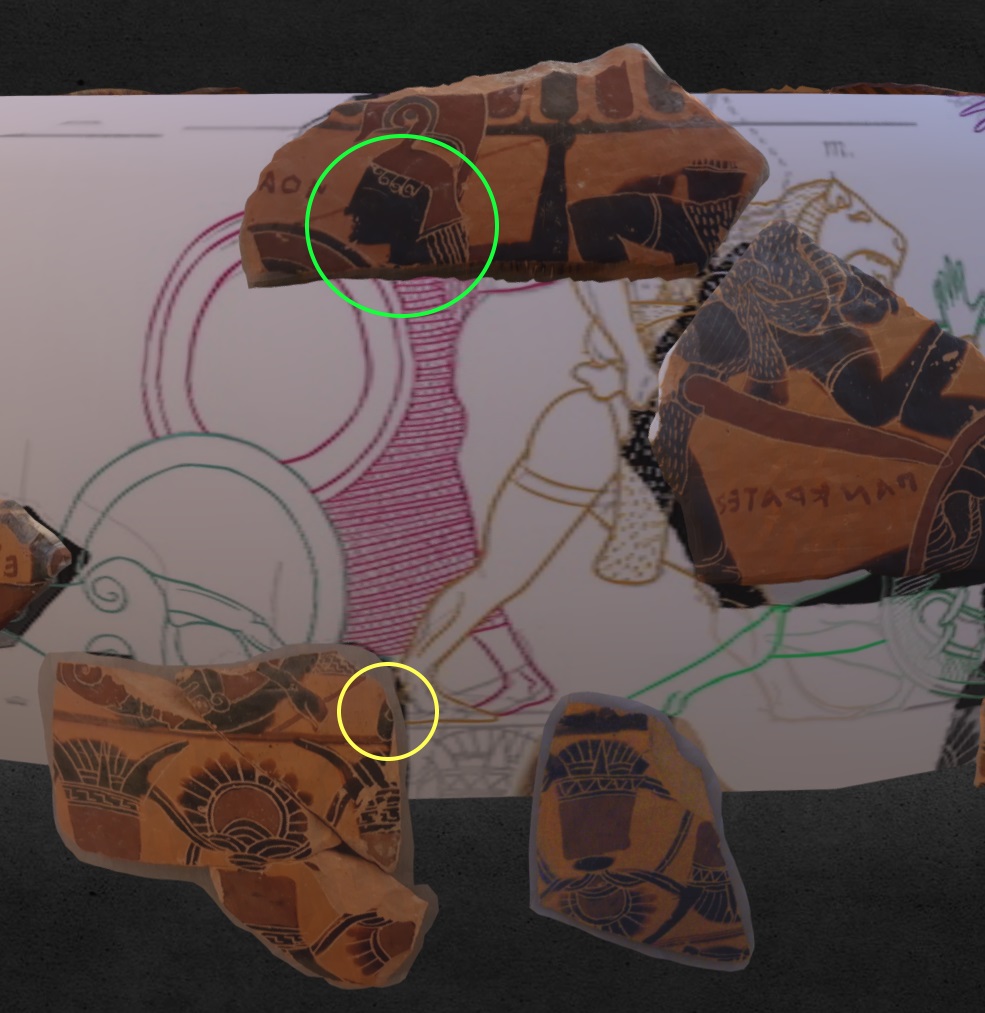
3D Scanning Art: An Ancient Art Mystery Solved by 3D Scanning
by Emily Potter on Apr 18, 2019
(ORIGINAL INTERVIEW CONDUCTED BY STEPHANIE PIERCY)
Emily Esser used her Matter and Form scanner and Lightwave 3D to verify a critical element within her art history undergraduate thesis
Emily Esser’s undergraduate thesis focused on artistic portrayals of the ancient battle between the gods and giants in Greek mythology. The epic poem behind this myth is lost, leaving scholars to puzzle out the story’s evolution by studying pieces of artwork based on the myth.
This project included an ancient vase where the role of Hera (Queen of the gods) was ambiguous. Earlier works depict Hera as a warrior, but changing politics in Greece diminished her to a kidnapping victim by time of the later portrayals. Emily hoped that by building a better visual reconstruction of this Greek vase from 500 BCE, she would be able to confirm that Hera had played the warrior role in the story at that particular time.
‘With the 3D scan technology I was actually able to verify something I wasn’t sure of, that was a big part of my thesis.’

[cp_modal display=”inline” id=”cp_id_d4787″][/cp_modal]
Along with a handful of shards belonging to the Getty Museum, Emily had access to black and white photos of the shards, as well as speculative drawings of the complete artwork done by Dr. Mary Moore decades ago.
To create her sketched guess of the complete design, Dr. Moore measured the dimensions of the shards and the vase itself, and then studied other examples of the artist’s work. By comparing figures, she was able to determine how best to ‘fill in the blanks’ between the shards. The details present on the shards provided direction for her study of the other works, and allowed her to make informed guesses as to how the missing portion of a weapon or body might look.
3D scanning art is a step-by-step process
Emily’s first step was to review the black and white photographs. Using photo-editing software, she undistorted the photos as much as possible, and then transposed them overtop of Dr. Moore’s sketched reconstructions. The addition of her own coloured drawings to Dr. Moore’s helped fill in the design further and she concentrated on gaps where the pieces were close together.

The 2D versions weren’t giving her a clear spatial understanding of key areas, including a crucial gap that would determine how Hera had been depicted on the vase. A smaller gap would suggest warrior Hera, who would have just struck a blow against the figure at her feet. But if the area was larger than it appears in 2D, due to 3D curvature, there might be room for other interpretations.
By 3D scanning the shards and mapping them to a digital copy of the sketched design that was bent in the round, Emily was able to take her analysis to the next level.
‘My options were limited as an undergraduate student. The scanner became a huge component in this, because I could basically take home the shards in a way that otherwise wouldn’t be possible.’
3D scanning art can change our interpretations
Emily only had a certain amount of time to access the shards in person, so she raced to scan as many she could. By placing a beanbag in the center of the turntable, she was able to scan up to four at once, capturing the front shape of each. Once the scans were finished, she converted them to OBJ and imported them to 3D-modelling software where the meshed geometry could be perfected by hand. Her next step was to smooth out the surfaces and then position them in a circular model, matching the sketches as closely as possible.
In order to achieve textures of photographic quality, Emily placed each shard face up, photographed it, and then created UV maps in the modelling software using those photos. This was a fairly simple process since the shards were flat enough that the photos were easy to apply on the UV maps.
Thanks to 3D technology, Emily was able to verify that on this vase Hera is indeed a warrior standing over her fallen enemy. Emily’s analysis showed that no other figure could fit in the space between the shards, proving her interpretation!

The yellow-circled shard was pivotal, forming a bridge between images. It depicts a tiny bit of Hercules’ heel, (the figure in the lion skin), and that connects to the figure who is face down in front of Hera (Hera’s face is circled in green). Having all the pieces at the right scaling and size was helpful, but building the artifact in 3D created a much stronger argument to confirm Emily’s thesis
Embrace 3D scanning art with Matter and Form
Museums are embracing 3D-scanning technology as a way to expand scholarship and create more access to artifacts. A classroom-friendly 3D scanner like the Matter and Form 3D V2 +Quickscan opens up exciting opportunities for historical learning for all students.
Check out more cool ways the Met and the Smithsonian are using 3D scanning in our article How 3D Scans Can Bring the Museum to You, including projects that preserve whole exhibits for all time!
[…] to make video games, make AR presentations, recognize and question artificial boundaries, and solve ancient Greek mysteries . You can even use our free AR viewer for iOS. We could not be prouder of the many amazing things […]
[…] To learn about how the Matter & Form 3D Scanner can be used in historical applications, read how this undergraduate student used 3D scanning to piece ancient art together. […]